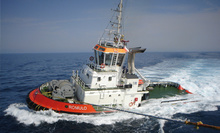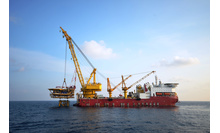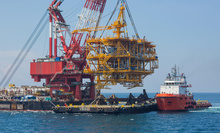- About us
- Markets
- Dry Cargo

- Wet Cargo

- Cruise

- Towage & SalvageTowage & Salvage

- Heavy Lift

- Inland ShippingInland Shipping

- Dredging

- EPCI CONTRACTORSEPCI CONTRACTORS

- Dry Cargo
- Products
- Information
- Our people
- Contact us
-
Brands
CASE STUDIES


overview
Are all UHMPE yarns the same?
The answer is ‘no’. Considerable research has been done comparing the various UHMPE yarns available and DYNEEMA®. This has proven that deviations in the DYNEEMA® yarn’s diameter and tensile strength are significantly lower than in other UHMPE yarns. Consequently, ropes using DYNEEMA® yarns provide longer service life.
Ropes consist of several 100,000 yarns that need to work together accurately to ensure maximum efficiency in terms of breaking strength. Large deviations in the diameter and tensile strength of individual filaments will result eventually in an unbalanced rope. Thinner filaments will be loaded in higher ratio compared to thicker filaments; eventually causing them to break. Once broken, a higher load is carried by the remaining thicker filaments creating an uneven load on the rope. Eventually there is a chainreaction as overloaded filaments continue to break until the rope fails. Large deviations in filaments can, therefore, significantly shorten the life span of a rope.
Rope Construction
As well as the correct filament, selecting the right rope construction is vital for both rope service life and safe usage. All too often rope is selected simply based on:
• Diameter
• Minimum Breaking Load (MBL)
• Price
Relying on these parameters alone is not enough. Rope construction provides vital clues to how the rope will perform in its specific working environment. The highest possible break load is attained if yarns are laid parallel; however, this leaves the rope without any construction; making it very ‘loose’ and difficult to handle. Construction gives the rope stability and so it can be spliced. For these reasons, construction is essential.
The examples below, Ropes A and B, show di fferent constructions demonstrating the di fference between longer and shorter ‘lay-lengths’. Lay length is the angle a strand makes against the longitudinal core-line of the rope. The longer the lay length, and/or more parallel orientation of the yarns, the stronger the rope will be in terms of breaking strength. Rope B has a longer lay length than A resulting in a higher MBL, however, it has less abrasion resistance.
In contrast, Rope A has a shorter lay length so it is not as strong as Rope B, but it has far better abrasion resistance. Abrasion resistance drops with a longer lay length as less material is used and the looser construction allows freer movement of filaments to abrade each other, resulting in a shorter rope life.
Rope Selection
When selecting a rope, it is important to think about how the rope will be used. Once the MBL requirement has been satisfied, if the rope is to be used in an environment where abrasion is likely the correct choice of rope construction is very important as well, otherwise the rope will need to be replaced frequently.
All applications require a balance between strength and abrasion resistance, to find the rope which will perform best in your application please contact Lankhorst Ropes today.

